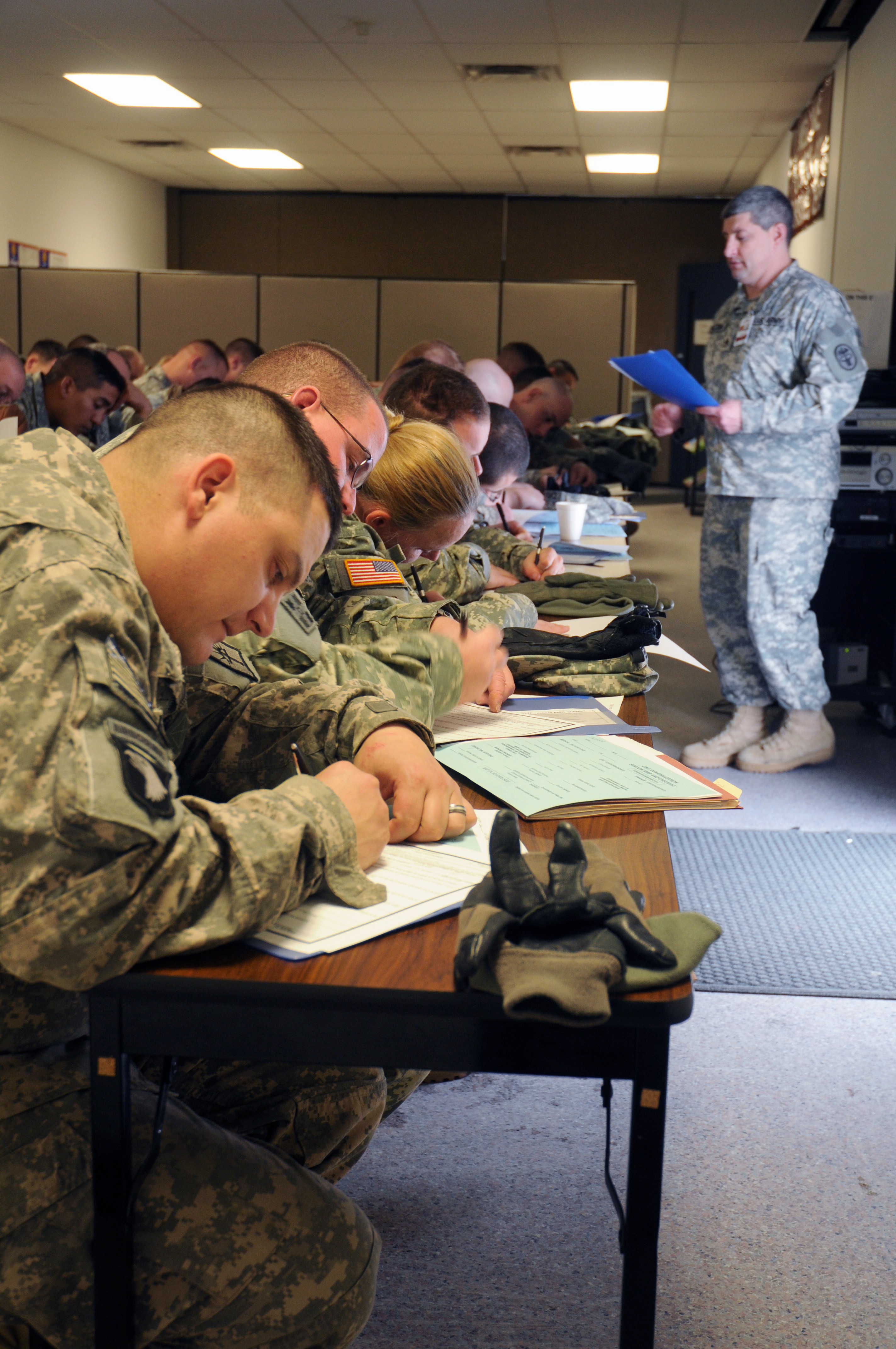
FORT McCOY, Wis. -- Soldiers still have a lot of important work to do during their last days of active-duty mobilization service as they transition to civilian life.
A five-day demobilization process at Fort McCoy facilitates that activity for Soldiers returning from a year of duty in either Operation New Dawn or Operation Enduring Freedom.
Col. Scott McFarlane, garrison deputy commander for mobilization, said the demobilization process actually begins as much as a month or two prior to the unit returning to the United States, mostly getting personnel records up to date.
"We use an Operations Plan developed here at Fort McCoy that has been adopted by First Army as a model for other installations to use. The Fort McCoy Demobilization Operations Plan clearly outlines what the unit is responsible for and for them to meet our process timeline. Many records are automated and sent to us electronically. That makes life easier when they arrive here. Demobilization certifies, documents and qualifies the Soldier for a lifetime of benefits," McFarlane said.
McFarlane said that signed certification is documented on the Department of Defense (DD) Form 214.
"That is the most important document a military servicemember gets upon separation from active duty and carries with them for the rest of their lives," he said. "The DD 214 is what is absolutely required for a servicemember to present when they register with the Department of Veterans Affairs (VA) to obtain medical care and several types of financial loans, mostly home loans."
The critical information on the DD 214 includes the date Soldiers entered service for the mobilization period, date separated from service, dates the Soldier served overseas and what country they served in.
This information tells the processor what awards the Soldier is authorized.
"The VA can't help someone if they don't have a DD 214," McFarlane said. "If it doesn't exist, there is a lot of grief later down the road."
Soldiers complete some of their initial paperwork when they are mobilizing to deploy to a theater of operations and complete their paperwork when they are demobilizing at the Soldier Readiness Center (SRC).
"We have a lot of friendly and professional people at the SRC to assist the Soldiers with the documentation process, both mobilization and demobilization," McFarlane said.
Extra assistance was provided for the 81st Brigade Combat Team (BCT) when it demobilized in September 2009. The state of Washington Department of Veterans Affairs sent about 30 people to Fort McCoy to provide information to Soldiers about state benefits, particularly VA benefits, along with employment services and several organizations providing resources to veterans.
The state of Wisconsin duplicated that effort when the 32nd BCT returned in February 2010.
Karen Elsing, SRC supervisor, said briefings conducted at the SRC include presentations by VA representatives. Representatives from the Tomah VA Medical Center assist Soldiers in filling out the 10-10EZ form to get Soldiers enrolled into the VA system. Federal and state VA representatives explain VA benefits.
Other briefings include Army Career Alumni Program, Military Family Life Consultant, religious services, legal, TRICARE, sexual assault, and finance. Soldiers also get a tuberculosis test, reissue of computer access cards, and screenings for behavioral health, medical, dental and audiology.
Soldiers receive a TA-180 card to identify them for health benefits available for 180 days after separation from active duty. Line-of-duty reports are written for Soldiers who have any sort of injury, and are used for medical reporting and to approve a Soldier to receive medical care for that injury.
Completing the DD 214 is the last task a Soldier performs during demobilization. Once the Soldier receives the DD 214 and their return from active-duty orders, they have completed the demobilization process and are released to their unit for travel to their home station and final release to their civilian life.

Social Sharing